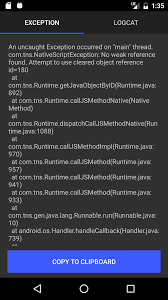A couple of days ago I had a chat with a friend, an ex-Telerik employee, who was the driving force behind JustDecompile product. We discussed briefly the recent Telerik announcement that open-sourced JustDecompile has been retired.

This the moment when you say “Wait a moment! JustDecompile is not open-source project”. This is correct. However JustDecompileEngine, the decompilation engine behind JustDecompile is open-source project since 2015. And if try to access it on GitHub you are greeted with a 404 error

Can you see the problem? Let’s look at another retired Telerik product – JustAssembly.

Fortunately, there are a lot of forks that contain this particular JustDecompileEngine commit
- https://github.com/MonarchSolutions/JustDecompileEngine
- https://github.com/kyapp69/JustDecompileEngine
- https://github.com/CompilerKit/JustDecompileEngine
- https://github.com/ChristianGutman/JustDecompileEngine
- https://github.com/Darkstrumn/JustDecompileEngine
- https://github.com/CrackerCat/JustDecompileEngine
- https://github.com/aungkolatt25/JustDecompileEngine
- https://github.com/mrandreastoth/JustDecompileEngine
- https://github.com/mmg1/JustDecompileEngine
- https://github.com/mjtworks/JustDecompileEngine
- https://github.com/mahtdev/JustDecompileEngine
- https://github.com/renesugar/JustDecompileEngine
- https://github.com/realvino/JustDecompileEngine
- https://github.com/propellingbits/JustDecompileEngine
- https://github.com/BradKnowles/JustDecompileEngine
- https://github.com/beppe9000/JustDecompileEngine
- https://github.com/ljdarj/JustDecompileEngine
- https://github.com/bbqchickenrobot/JustDecompileEngine
- https://github.com/Bartizan/JustDecompileEngine
- https://github.com/kvelikov/JustDecompileEngine
- https://github.com/guangxb/JustDecompileEngine
- https://github.com/nasa03/JustDecompileEngine
- https://github.com/NREADY-RnD/JustDecompileEngine
- https://github.com/nhtha/JustDecompileEngine
- https://github.com/nagyist/JustDecompileEngine
- https://github.com/wutijat/JustDecompileEngine
- https://github.com/wpalomo/JustDecompileEngine
- https://github.com/WooZoo86/JustDecompileEngine
- https://github.com/mcutools/JustDecompileEngine
- https://github.com/masterbtc/JustDecompileEngine
- https://github.com/alexasahis/JustDecompileEngine
- https://github.com/ahmedfe/JustDecompileEngine
- https://github.com/AbhiAbzs/JustDecompileEngine
- https://github.com/Klegy/JustDecompileEngine
- https://github.com/GhosterL/JustDecompileEngine
- https://github.com/Gao851021/JustDecompileEngine
- https://github.com/fr830/JustDecompileEngine
- https://github.com/FinchYang/JustDecompileEngine
- https://github.com/eriawan/JustDecompileEngine
- https://github.com/dillishrestha/JustDecompileEngine
- https://github.com/DevSw/JustDecompileEngine
- https://github.com/daveo1010/JustDecompileEngine
- https://github.com/kisserleon/JustDecompileEngine
- https://github.com/kelvin5562/JustDecompileEngine
- https://github.com/ctkqiang/JustDecompileEngine
- https://github.com/jitendrac/JustDecompileEngine
- https://github.com/jianggt/JustDecompileEngine
- https://github.com/JarLob/JustDecompileEngine
- https://github.com/IoannisParaskevopoulos/JustDecompileEngine
- https://github.com/imatary/JustDecompileEngine
- https://github.com/HotDenim/JustDecompileEngine
- https://github.com/guangxb/JustDecompileEngine
- https://github.com/Darkstrumn/JustDecompileEngine
- https://github.com/CrackerCat/JustDecompileEngine
- https://github.com/aungkolatt25/JustDecompileEngine
- https://github.com/mrandreastoth/JustDecompileEngine
- https://github.com/MonarchSolutions/JustDecompileEngine
- https://github.com/mmg1/JustDecompileEngine
- https://github.com/mjtworks/JustDecompileEngine
- https://github.com/mahtdev/JustDecompileEngine
- https://github.com/marclayson/JustDecompileEngine
- https://github.com/latestalexey/JustDecompileEngine
- https://github.com/tevfikoguz/JustDecompileEngine
- https://github.com/stephensmitchell-forks/JustDecompileEngine
- https://github.com/StbLinux/JustDecompileEngine
- https://github.com/soitun/JustDecompileEngine
- https://github.com/rolembergfilho/JustDecompileEngine
- https://github.com/riQQ/JustDecompileEngine
- https://github.com/windrey/JustDecompileEngine
- https://github.com/wbsabc/JustDecompileEngine
- https://github.com/ustayready/JustDecompileEngine
- https://github.com/tkuewlch/JustDecompileEngine
- https://github.com/mcutools/JustDecompileEngine
- https://github.com/masterbtc/JustDecompileEngine
- https://github.com/alexasahis/JustDecompileEngine
- https://github.com/ahmedfe/JustDecompileEngine
- https://github.com/AbhiAbzs/JustDecompileEngine
- https://github.com/kocyigitkim/JustDecompileEngine
- https://github.com/MariTechie/JustDecompileEngine
I worked at Telerik for many years and I know in details how the decisions for open-sourcing or discontinuing a project are taken. Without revealing any details, let me assure you that a lot of people are involved in these processes and the decisions aren’t taken lightly. Considering sales and marketing people, product owners, team leads, support leads and VPs it is easy to involve 10-12 persons.
It is easy to conclude that the people involved in this process don’t know what open-source software development is. This is somewhat typical for many corporations. It is funny. It would be funnier if Telerik restores JustDecompileEngine repo (wink-wink).
In case you decide to retire an open-source project I would suggest the following steps:
- Edit main
README.mdfile- briefly explain the reason to retire the project
- provide a list of alternative, preferable open-source projects
- Disable, if any, CI builds
- Consider changing the project license to even more permissive if possible
- Archive the repo (make it read-only)
Anyway, JustDecompile is now CodemerxDecompile and JustDecompileEngine has a new home and is even better.




